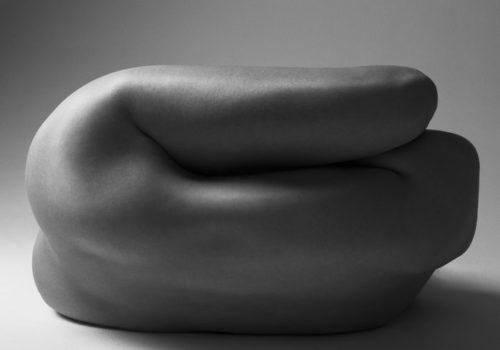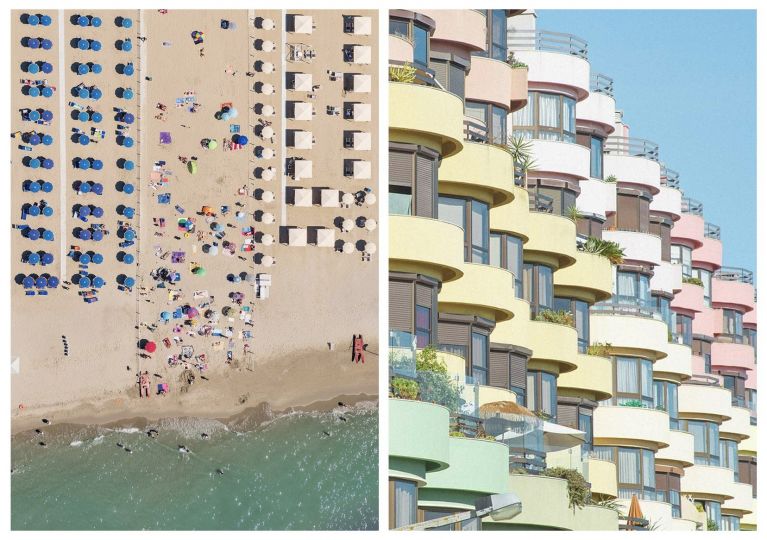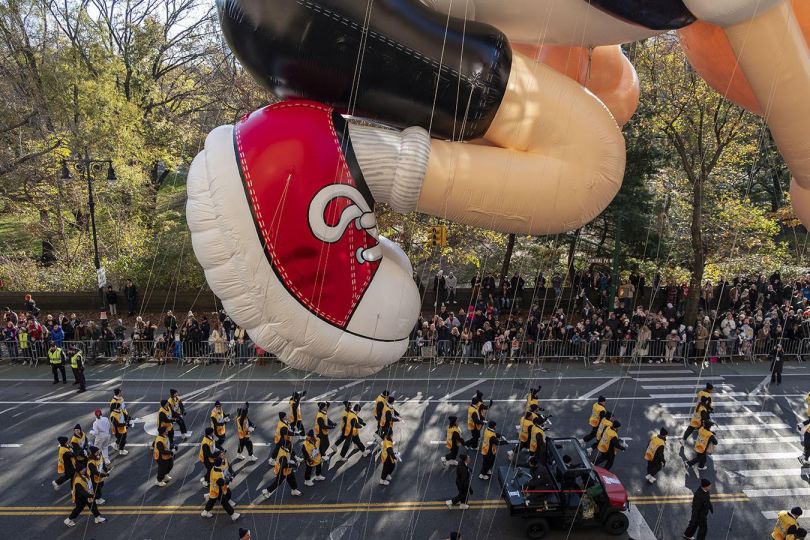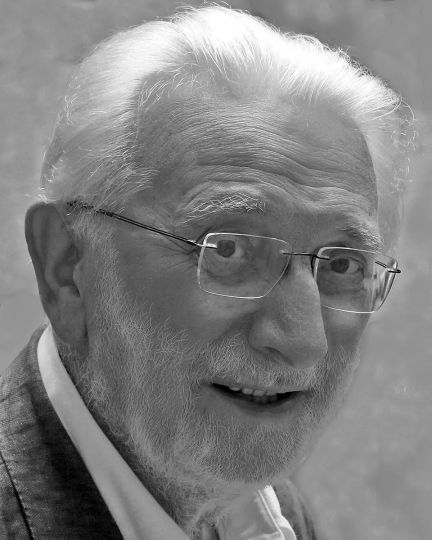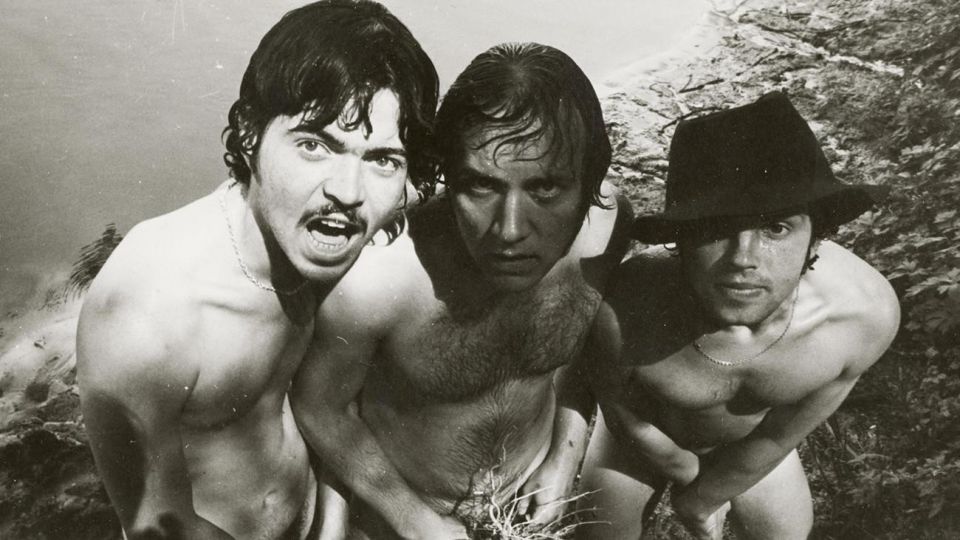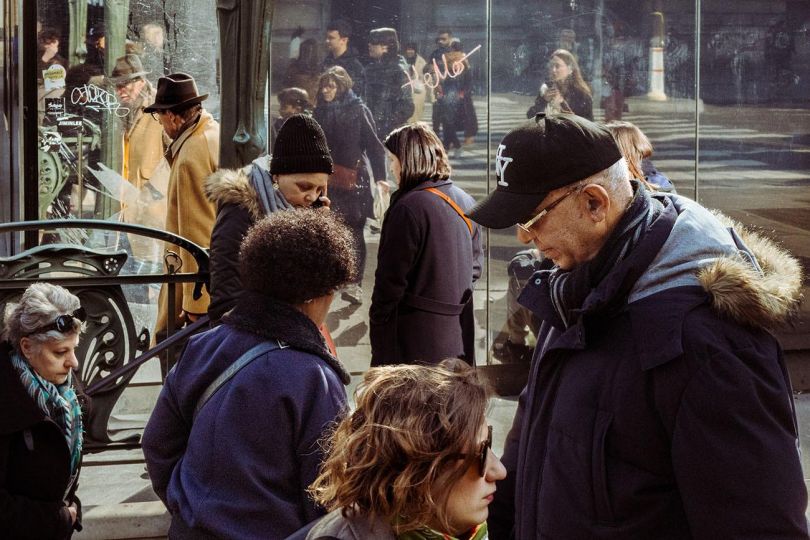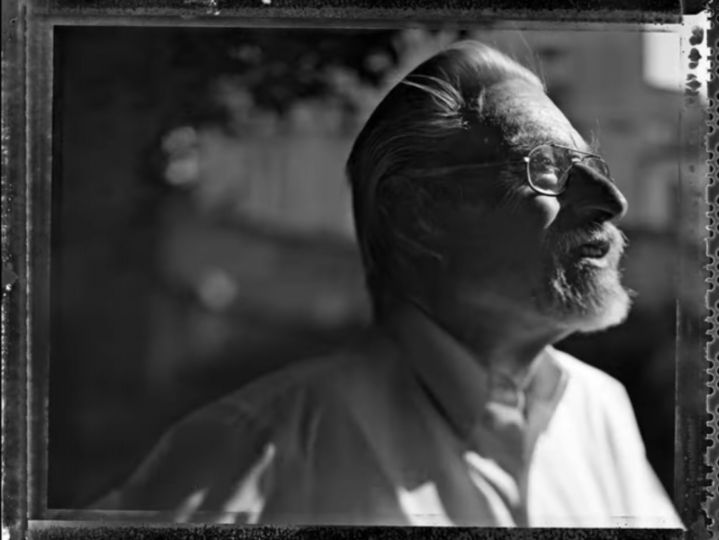German photographer Klaus Kampert embraces a holistic approach to his nude photography. He seeks to capture something of the “body and soul” to transform the motif into a subject and transcend the model’s individuality to attain universality.
“I do not consider myself to be first and foremost a photographer of nudes.” The statement is baffling, given the extent to which the photographer’s work has always been associated with the nude genre. And with good reason: the bareness of his models is both the common thread running through all his series and what appears to be the sole focus of his quest. “My photography addresses the nudity of bodies as a way to draw closer to the spirit and emotions of human beings, through body language.” For Klaus Kampert, the body is both the vessel and the interpreter of the soul, or its mediator: “querying my model’s body allows me to approach the human being comprehensively,” he says.
Clothing, make-up and accessories confuse our understanding and trap the body in a discourse, whereas nudity enables the body to express the full range of emotions. Under the same shooting conditions, the same body may appear rounded or angular, cold or sensual, rigid or supple… For the artist, “nudity is truth”.
This desire to allow the body to speak is what prompted him, in some series, to work without the faces of his models, but without compromising the constancy of his holistic approach. “Pars pro toto” (a part taken for the whole): body language is all it takes to depict the expression being sought and the lack of distinctive features lends this expression a certain universality.
In the same spirit, the photographer sometimes chooses to hide body parts, to better reveal what remains visible. Such is the case with the Wrapped series, where the model seems to emerge from a chrysalis, or the Water Creatures series, where the model is partially submerged.
In a way, Klaus Kampert‘s approach is comparable to that of a sculptor, and the title of one of his series, Tribute to Modigliani, conveys the medium’s influence on his output. “I’m trying to make sculpture with photography,” he says, “by trying to simplify, by emphasizing form and emotion.” The sculptural aspect of his photographs is especially visible in the On Body Forms and Torsi series, in which the models’ bodies, caught in abstract poses, become a repertory of shapes. In the Porcelain series, the artist pushes the photography-as-sculpture metaphor so far as to give the skin of his model the appearance of porcelain, by employing soft, shiny light.
Over the course of his projects, Klaus Kampert has developed a close collaboration with professional dancers. This interest in dance even led him to work with the dancers of Deutsche Oper am Rhein (“German Opera on the Rhine”) for the Balet Calendar series. For the artist, dancers are the embodiment of “Gesamtkunstwerk”, the total work of art, for dance “is not just a career, but a lifestyle and a life choice”, where body and mind are united in the quest for perfection. “From a tender age, they experience their bodies as a medium for expression. They train their bodies and their minds, physically and emotionally, and achieve a state of awareness of their own completeness. When I work with dancers, I do not have to explain what a good image is. They know.”
Today, at age 70, Klaus Kampert sums up his journey in a single sentence: The initial experiments with his father’s Leica, when he was still a teenager, then the film lab in the bathroom, acquiring his first 6×6 camera, and finally his apprenticeship under fashion and advertising photographers, from whom he learned “a lot and fast”. Impatient to make it on his own, he quickly opened his own studio and worked with an enthusiasm that still characterizes him today. His work, which has earned many awards, is known internationally thanks to publications, exhibitions and participation in photography festivals in Europe, North America and Asia.
More information
View Klaus Kampert’s biography, video interview and portfolio on the Artistics website.

